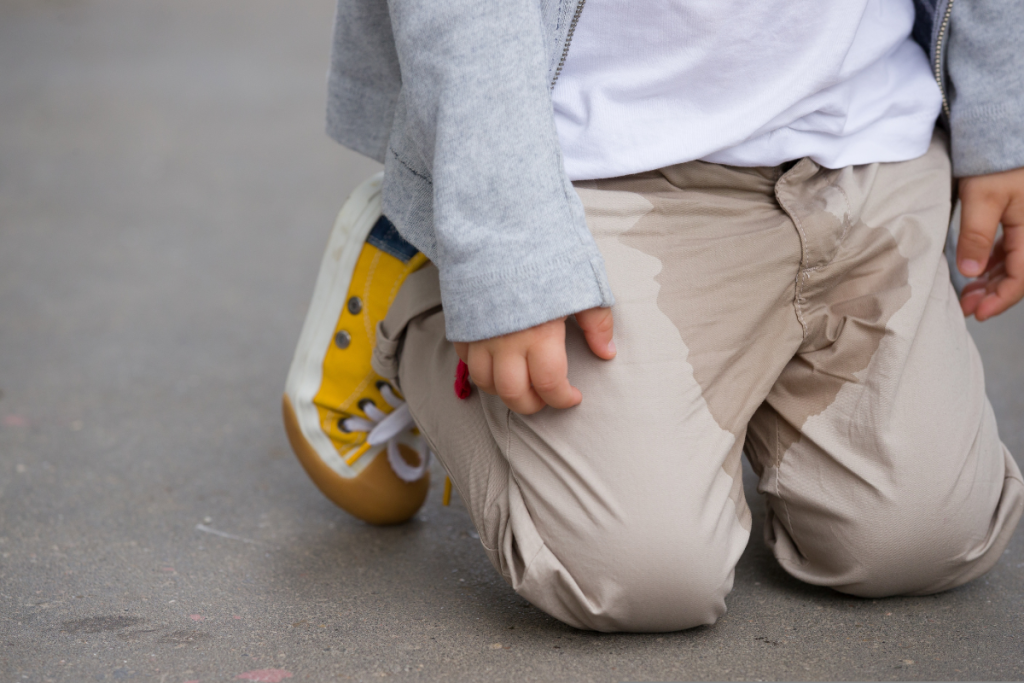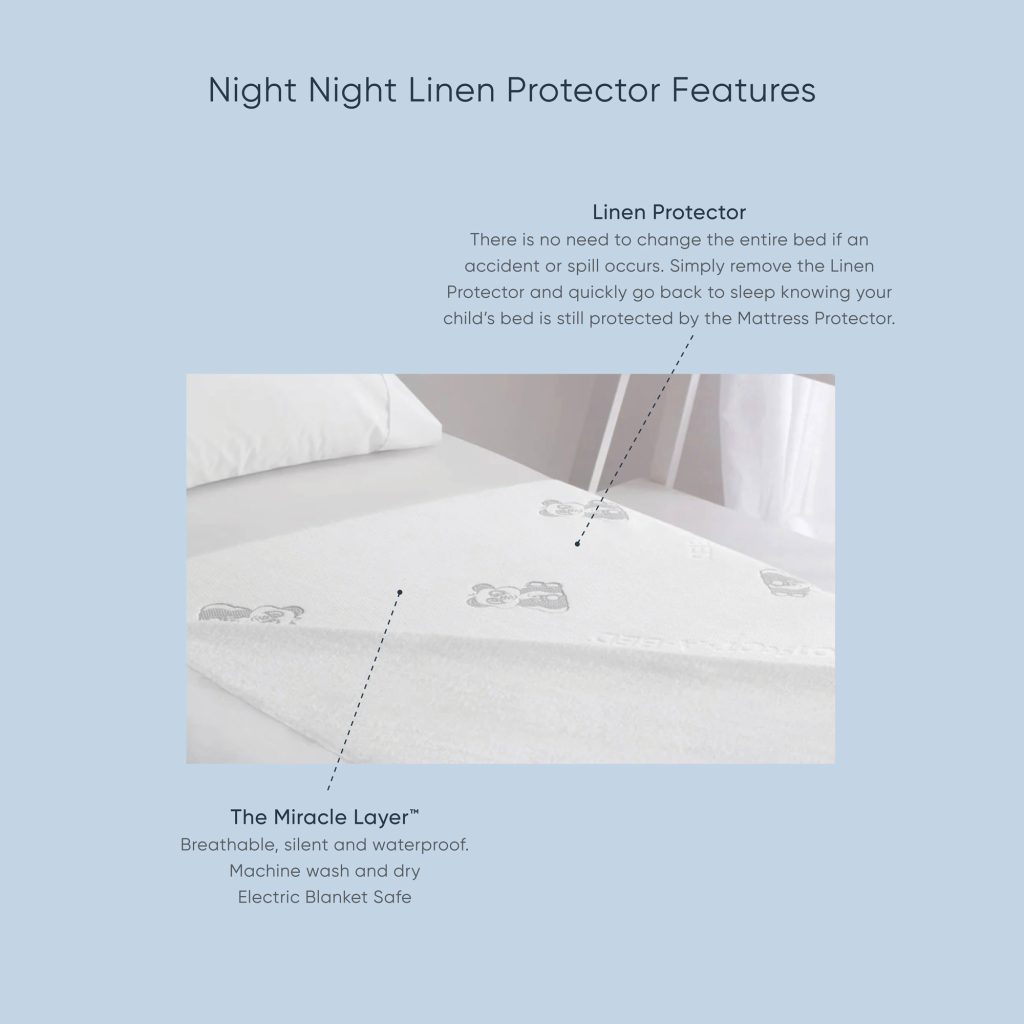Embracing the Journey to Dry Nights Together
As parents, we understand how bedwetting can be a sensitive issue for both you and your child. At Therapeutic Pillows to offer you support, understanding, and practical advice to navigate this phase with compassion and effectiveness.
When It's More Than Just a Wet Bed: Signs to Watch For
It's Not Just About the Laundry
Bedwetting, or nocturnal enuresis, is often a normal part of a child's development, but it can sometimes be a sign of other issues. It's a good idea to chat with your pediatrician if:
• Your child, who is 7 or older, still has frequent bedwetting.
• The bedwetting is new or has returned after being dry for a while.
• You notice other symptoms like daytime accidents, pain, or changes in urine colour or smell.
Remember, your child isn't wetting the bed on purpose. It's not about being lazy or seeking attention; it's a part of growing up for many kids.
Understanding Why This Happens
Several factors can contribute to bedwetting. It could be genetics (yes, it often runs in families), a smaller bladder, deep sleeping patterns, or the body producing more urine at night. In rare cases, it might signal a medical condition, but this is not common.

Tackling Bedwetting: Practical and Kind Strategies
Preparing for a Dry Night
Let's make those nighttime accidents less stressful. Use waterproof mattress protectors and consider absorbent bed pads. It's all about reducing the hassle of changing and washing sheets in the middle of the night. Consider buying the Night Night Bedwetting Kit to dry-proof your kid's bed while they learn to manage nocturnal enuresis.
The Magic of Bedwetting Alarms
Alarms can be a game-changer. They detect moisture and wake your child so they can use the bathroom. It teaches their body to respond to a full bladder. Patience is key here; it might take a few weeks to see a change.
Bedwetting and Night Terrors: Understanding the Connection
Sometimes, bedwetting and night terrors occur together, particularly in children who are deep sleepers. While they may seem connected, they're usually separate issues and need individual attention.
Protecting the Bed and Empowering Your Child
A key part of managing bedwetting involves protecting the mattress and bedding. Here are some strategies:
- Use Waterproof Mattress Protectors: These are a lifesaver. A good waterproof mattress protector can keep the mattress dry and can be easily washed. They come in various materials, so you can choose one that's comfortable and doesn't make noise when your child moves.
- Waterproof Sheets and Bed Pads: In addition to a mattress protector, consider waterproof sheets or absorbent bed pads. They add an extra layer of protection and are much easier to change than the entire bedding.
- Waterproof Cushions: Add Steri-Plus covered cushions to your kids' seating at home for a moisture and bacteria-free seating environment. These cushions are easy to wipe clean in case of accidents.

A Plan to Empower Your Child in Managing Bedwetting and Stay Dry During the Night
- Involve Your Child: When it comes to changing wet sheets, involve your child in the process. This isn't about punishment; it's about teaching them responsibility and normalizing the situation. It can be as simple as having them help carry the sheets to the laundry.
- Positive Reinforcement: Celebrate the dry nights. A little praise goes a long way. It's not about rewarding them for something they can't fully control, but about recognizing their efforts and the progress they're making.
- Keep Extra Bedding Handy: Have a stack of clean sheets and protectors ready to go. This makes changing the bed in the middle of the night or the morning less of a chore.
- Nighttime Routine: Establish a calming bedtime routine. Encourage your child to use the bathroom right before bed and avoid drinking large amounts of liquid right before sleep.
- Open Communication: Talk to your child about bedwetting in a non-judgmental way. Let them know it's a common issue many children face and that it's not their fault.
- Stress Management: Sometimes, bedwetting can be linked to stress. Help your child find ways to relax and unwind, especially before bed.

Remember, the goal here is to make your child feel supported and confident. Bedwetting is a phase many children go through, and with your love and guidance, they'll come through it feeling strong and capable.
As we walk this path together, remember, that your understanding and patience are the most comforting support you can offer your child. Bedwetting is usually a temporary phase, and with time, patience, and the right approach, most children overcome it.
For more detailed information and resources, please consult The Royal Children's Hospital Melbourne (www.rch.org.au) and Mayo Clinic (www.mayoclinic.org).
Your questions answered:
It's less common, but yes, adults can also experience bedwetting. If this happens, it's important to see a healthcare provider.
 1
1 0
0It's common for children up to 7 years old to wet the bed. But if it continues or starts suddenly after this age, it's worth discussing with your doctor.
 1
1 0
0There's no one-size-fits-all answer. It often involves a combination of strategies like bedwetting alarms, lifestyle changes, and sometimes medication. Make your kid part of the process explaining the situation, reducing the intake of water before going to bed, take them to the bathroom before sleeping, and reinforce good outcomes in the morning after are some of the strategies you can follow to help your kid trough this learning stage.
 1
1 0
0









